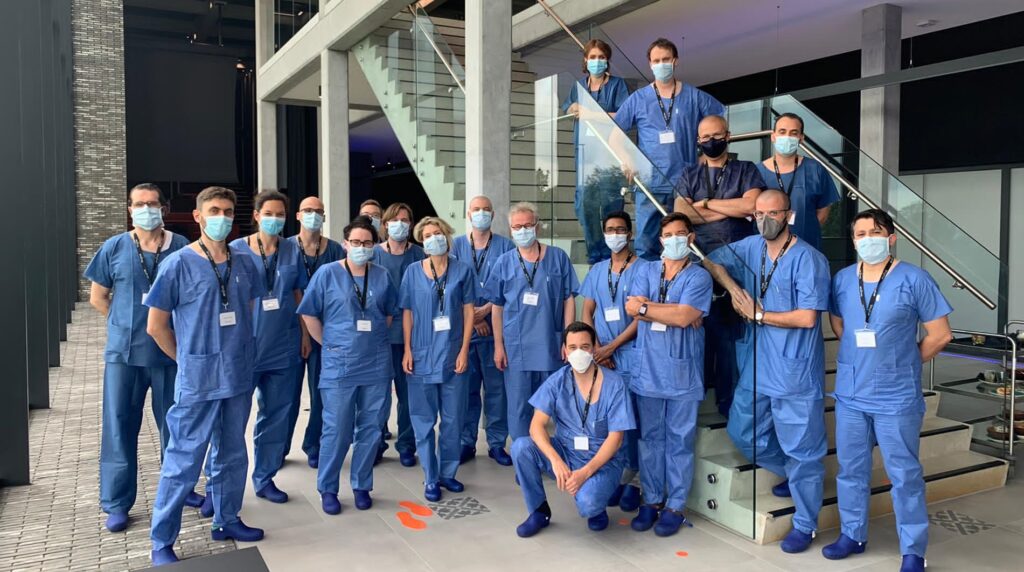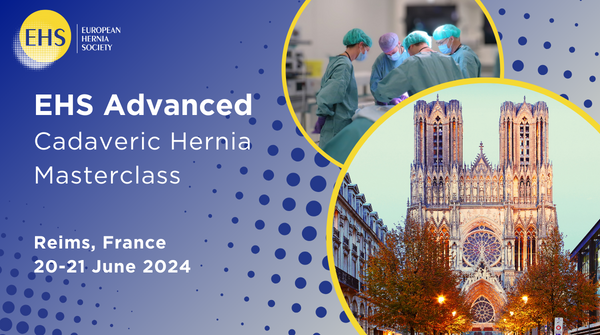
Reflections from one of the attendees, Florina Popa, at Robotic Abdominal Wall Surgery course
I am a general surgeon (MD) with surgical training gained both in Romania (Cluj-Napoca University Center) and France (Hôpital Bichat-Claude-Bernard, Centre Hospitalier de Mâcon, Centre Hospitalier de l’Agglomération Montargois, Centre Hospitalier Montlucon, Centre Hospitalier Guingamp).
In 2019 I obtained my PhD guided by Prof. Georgescu Alexandru pioneer in plastic surgery and we fulfilled the goal to develop a large animal incisional hernia model that is clinically relevant and to evaluate the efficacy of the new flap repairs, which can be used to treat recurrent incisional hernias. All my interest lies in deepening my knowledge in hernia field, therefore attending the 2nd European Hernia Society Discovery course on robotic abdominal wall surgery, 29-30.06.2021, accomplished my wish to interact with Da Vinci Si, X and Xi Surgical Systems. The two-day course combines theoretical information (Rationale for robotic abdominal wall surgery; Lectures about inguinal hernia /ventral hernia repair: anatomy, docking, step-by-step procedure) with robotic training (Simulator session on porcine model lab). I want to share with you that I was amazed by ORSI Academy: the design of the building, how well the laboratory is organized and the trained staff who helped us during simulator session. Being my first interaction with robotic surgery, besides the fact I was the only one representing Romania, I realized how much difference there is between laparoscopy and robotic surgery. I find that in laparoscopic surgery the most annoying thing is having someone else holding your optical camera because it can’t show you exactly what you want, when you want and how you want to see or sometimes you even have the misfortune of working with poorly trained staff. For me the fact that you have total control over the optical camera and the possibility to zoom the surgical site guarantees surgical time decrease. For long-term operations, the presence of the console makes it easier for the surgeon to perform complex procedures. It is true that robotic surgery is expensive, but the advantages from enhances precision, flexibility and surgical control during the operation to a high-definition, magnified, 3D view of the surgical sitemakes it worthwhile for both the surgeon and the patient. Hernia pathology is a developing subject and robotic surgery represents the future. In Romania, unfortunately, general surgeons and residents hardly have the opportunity to see real life robotic surgery. That’s why I encourage all doctors especially from underdeveloped and developing countries to apply for such a course, because it may be the trigger to advance in hernia knowledge to improve in surgical skills in order to provide the best care for patients.
In addition to the hands-on robotic course co-organized by EHS and Intuitive, I was able to visit Ghent Centrum, I had the chance to meet other surgeons from other countries that allowed me to exchange information and share experiences. All this experience and that things have calmed down with COVID encourage me, now, to apply for a postdoctoral scholarship.
I thank the EHS and above all INTUITIVE for introducing me to the world of robotic surgery by attending the 2nd European Hernia Society Discovery course on robotic abdominal wall surgery, At a da Vinci Training Center; ORSI Academy, Melle (Belgium).
Florina Popa
You can still apply for the upcoming Robotic Course scheduled for 2-3 May, 2024. Read more about the course and apply HERE. The deadline for applications is 29 February.


